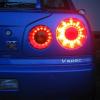Announcements
-
Similar Content
-
Latest Posts
-
From memory and please correct me if I have this wrong, the nismo that come with half shafts are specific for that diff centre. You may be able to find Nissan ones that match up but you'd need to understand what nismo are doing. Best option is get a pair of 5x1 axles, they usually don't cost that much and direct swap over for the 3x2(6 bollt)
-
AFAIK, the length of the shafts has NOTHING to do with the ratio of the diff.
-
It depends on what the guy who bought its Ratio is. Mine is a 4.36 Jus Jap told me anything above a 3:9 has equal length shafts which the Nismo center's shafts were not.
-
If those shafts in the last 2 photos are the ones that came with the diff, you have no hope of fitting the other ones because they are completely different
-
I have recently fitted a Nismo GT Pro Center second Hand buy still in the box i got stubs with it but they are 5 bolt and I need 6 (3x2) I was told by Just Jap that for a 4:36 ratio the stub axles are equal length sku 38220-0V161. They didn't have any in stock but I picked up the ones pictured. The one with 5 bolt are the ones that came with the LSD. The right side went in no issues but the right....I have happened the fk out of it put it in a press and it still sticks out about 5mm too far. It was sticking out about 25mm but after bashing it like Chris Brown did to Rhianna I managed to get it a bit further in but seems stuck again now. Any ideas? Should I just leave it 5mm out and send it?
-






Recommended Posts
Create an account or sign in to comment
You need to be a member in order to leave a comment
Create an account
Sign up for a new account in our community. It's easy!
Register a new accountSign in
Already have an account? Sign in here.
Sign In Now